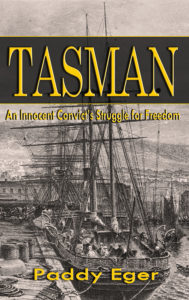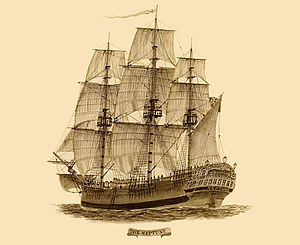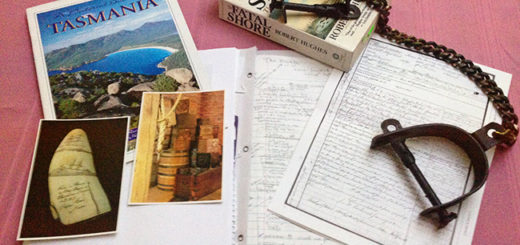Tasman Background – Sailing From England
 In the 1850s sailing ships plied the earth carrying cargoes as varied as the ports they visited. Live animals, local crops, mined ore, lumber, government notices and soldiers as well as letters and humans; convicts were among its paid cargo.
In the 1850s sailing ships plied the earth carrying cargoes as varied as the ports they visited. Live animals, local crops, mined ore, lumber, government notices and soldiers as well as letters and humans; convicts were among its paid cargo.
The trip to Port Arthur, Tasmania meant stops along the way: Tenerife, Rio, Cape Town. Ships used the trade winds to advantage as they distributed or exchanged both sanctioned and secret cargoes.
Most honored Neptune, the god of the sea, when if they crossed the equator. That meant raucous celebrations or silly antics while wearing outlandish outfits consisting of buckets on their heads and draped clothing befitting any god.
 On other days it was all business: working the sails and keeping watch for other ships and sea creatures. Most sailors were there by choice, a few were kidnapped from port towns to augment their numbers when lessened by fatal onboard accidents or disease.
On other days it was all business: working the sails and keeping watch for other ships and sea creatures. Most sailors were there by choice, a few were kidnapped from port towns to augment their numbers when lessened by fatal onboard accidents or disease.
The typical trip east meant sailing toward South America to catch favorable winds then re-crossing the Atlantic to round Africa. Then they continued on, beginning the long journey across the Indian Ocean and onto the lands around Australia and Tasmania. Foodstuffs were gathered at ports along the way to supplement their supplies. At those same ports, letters and messages were sent home with the next ship heading back to England. In total, a one-way trip might last anywhere from four to six months.




Recent Comments